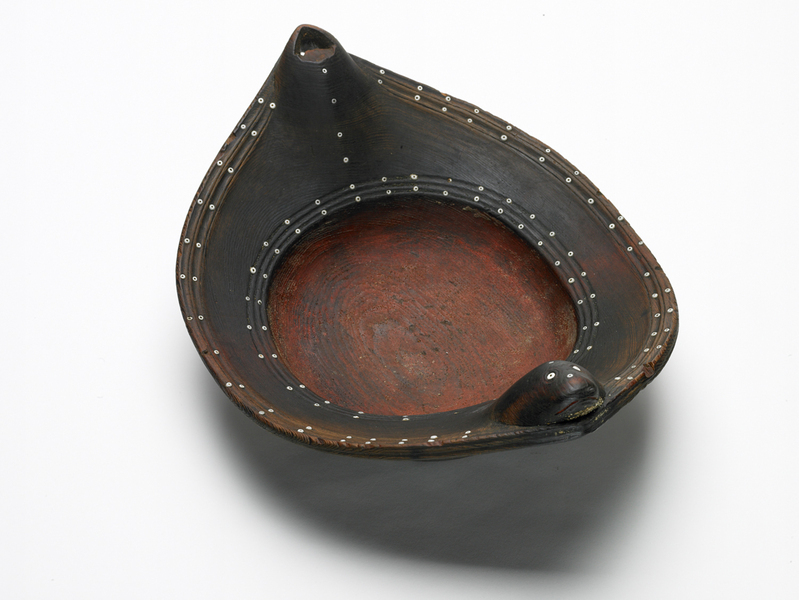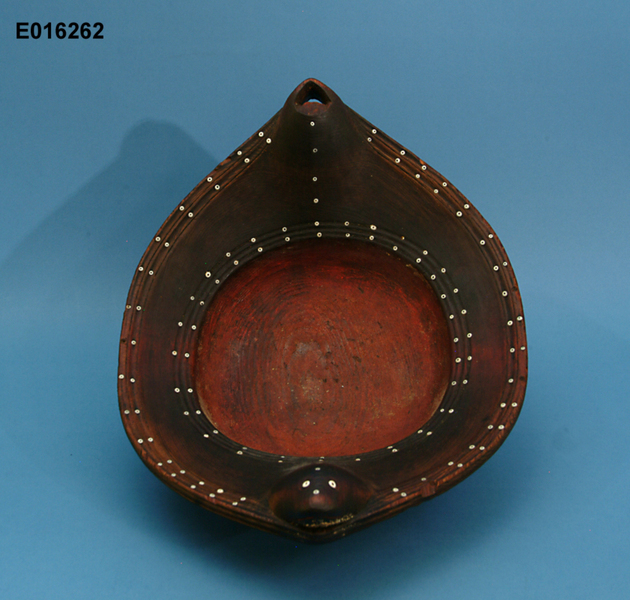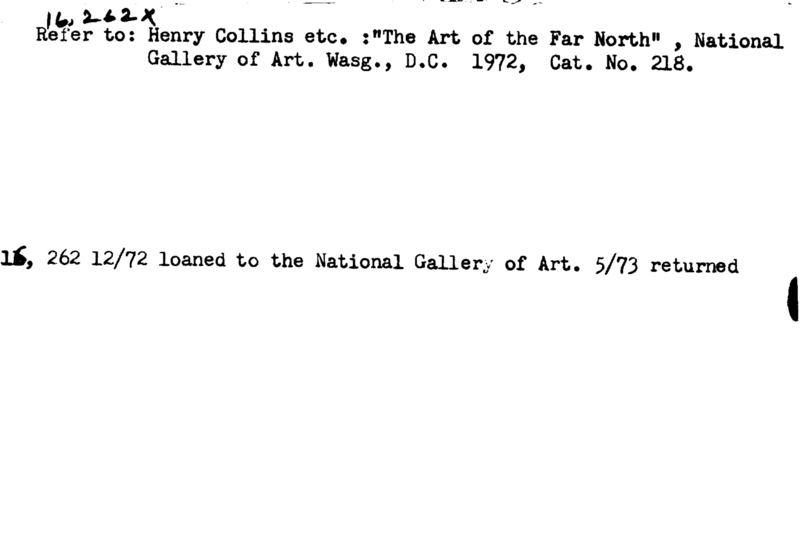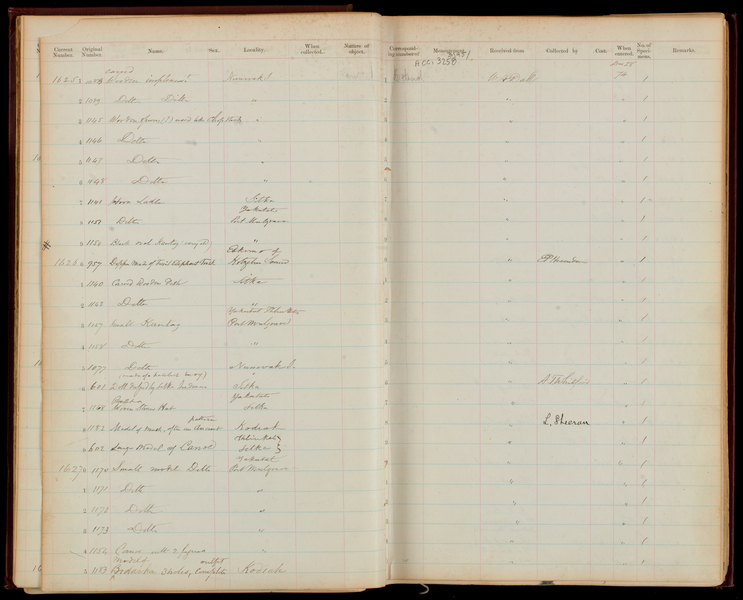Carved Wooden Dish Or Bowl Item Number: E16262-0 from the National Museum of Natural History








Notes
FROM CARD: "CENTER IS A CONCAVE CIRCULAR HOLLOW, SURROUNDED BY A WIDE RISING BORDER, CARVED AT THE ENDS INTO THE HEAD AND TAIL OF A SEAL. (PART OF TAIL IS CHIPPED). THE CENTER AND THE BORDER ARE EACH INCISED WITH THREE LINES, THE TWO OUTER ONES OF WHICH ARE INLAID WITH SMALL OPAQUE WHITE GLASS BEADS. THE TECHNIQUE OF THIS ITEM APPEARS TO INDICATE ESKIMO AND/ OR ALEUT INFLUENCE. (GEO. PHEBUS.) REFER TO: HENRY COLLINS ETC.: "THE ART OF THE FAR NORTH", NATIONAL GALLERY OF ART. WASH., D.C. 1972, CAT. NO. 218. 16,262 12/72 LOANED TO THE NATIONAL GALLERY OF ART. 5/73 RETURNED."Source of the information below: Smithsonian Arctic Studies Center Alaska Native Collections: Sharing Knowledge website, by Aron Crowell, entry on this artifact http://alaska.si.edu/record.asp?id=516, retrieved 9-2-2012: Bowl. ciquq "bowl" - Language: Chugach Sugpiaq (Prince William Sound dialect) Though collected in Sitka, Alaska, and identified as possibly Tlingit, Aron Crowell identifies this object as Sugpiaq (Alutiiq), probably from Prince William Sound, Alaska. Sugpiaq men ate from round and animal-shaped dishes. This bowl represents a swimming seal, its head and tail just above the ocean surface. Ripples from its motion encircle the rim and spread out from the red-painted central hole, which may depict the swirl of water left by a diving seal. In Sugpiaq and Yup'ik art, circles represent passageways between levels of the multi-layered cosmos, and between upper and lower levels of the sky and sea. White trade beads accent the design.This object is on loan to the Anchorage Museum at Rasmuson Center, from 2010 through 2027.Object appears to be the one published as Fig. 30, p. 393 in Boas, Franz, and George Hunt. 1897. The social organization and the secret societies of the Kwakiutl Indians. Washington: G.P.O. (U.S. National Museum Annual Report for 1895, pp. 331-738.)
Item History
- Made in Sitka, Baranof Island, Alaska, USA
- Collected by Dr. William H. Dall in Sitka, Baranof Island, Alaska, USA
- Received from U.S. Coast Survey during 1874
What
- Name
- Carved Wooden Dish Or Bowl
- Identification Number
- E16262-0
- Type of Item
- bowl
Who
- Culture
- Eskimo and Alutiiq ?
- Field Collector
- Dr. William H. Dall
- Received from
- U.S. Coast Survey
Where
- Holding Institution
- National Museum of Natural History
- Made in
- Sitka, Baranof Island, Alaska, USA
- Collected in
- Sitka, Baranof Island, Alaska, USA
When
- Acquisition Date
- during 1874
Other
- Accession Number
- 003195